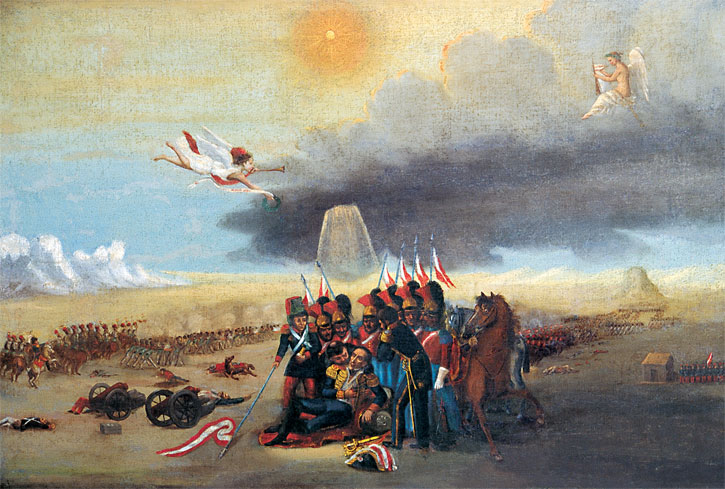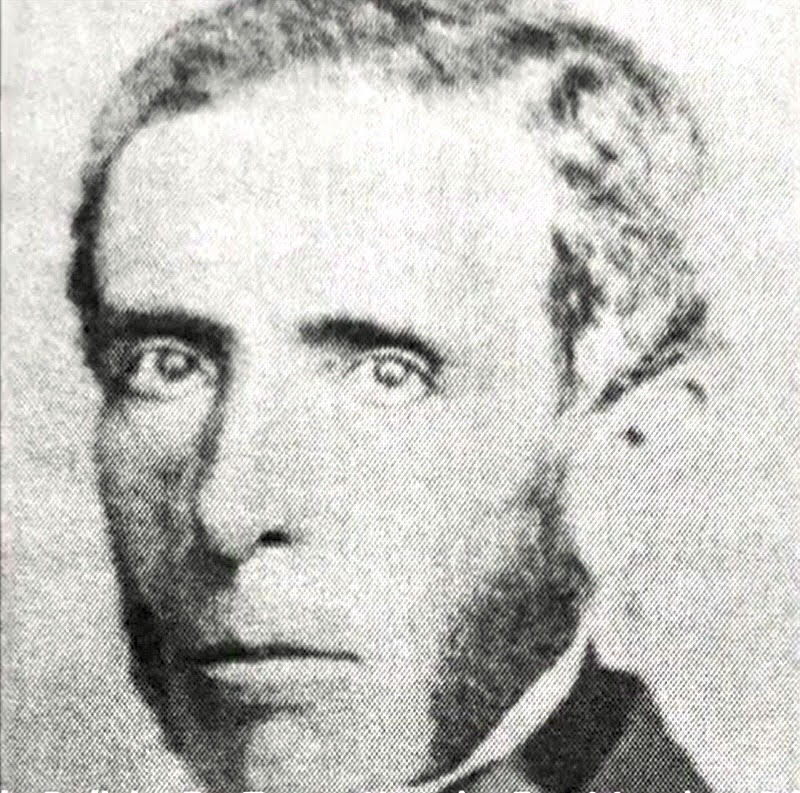|
Casto Arguedas
Casto Arguedas (23 April 1820 – 4 March 1888) was a Bolivians, Bolivian Officer (armed forces), military officer who held the position of Commander in Chief of the Bolivian Army on two occasions in 1879 and between 1885 and 1887. He was a prominent political figure of his time and was at the helm of the Constitutionalist Revolution of 1865–1866, which attempted to overthrow Mariano Melgarejo. Military career In 1841, Arguedas was going to finish his university studies when the Peruvian-Bolivian War of 1841-1842, second Peruvian invasion of Bolivia took place. It was then that all able bodied men throughout the entirety of Bolivia had to take up arms to defend their country, and Arguedas was among them. Incorporated into the ''Carabineros'' battalion as a cadet, he soon demonstrated his military aptitudes and excellent leadership skills, qualities with which he was able to win the appreciation and esteem of his superiors who began to look at him with deference. When the Battl ... [...More Info...] [...Related Items...] OR: [Wikipedia] [Google] [Baidu] |
La Paz
La Paz (), officially known as Nuestra Señora de La Paz (Spanish pronunciation: ), is the seat of government of the Plurinational State of Bolivia. With an estimated 816,044 residents as of 2020, La Paz is the third-most populous city in Bolivia. Its metropolitan area, which is formed by La Paz, El Alto, Achocalla, Viacha, and Mecapaca makes up the second most populous urban area in Bolivia, with a population of 2.0 million, after Santa Cruz de la Sierra with a population of 2.3 million. It is also the capital of the La Paz Department. The city, in west-central Bolivia southeast of Lake Titicaca, is set in a canyon created by the Choqueyapu River. It is in a bowl-like depression, part of the Amazon basin, surrounded by the high mountains of the Altiplano. Overlooking the city is the towering, triple-peaked Illimani. Its peaks are always snow-covered and can be seen from many parts of the city. At an elevation of roughly above sea level, La Paz is the highes ... [...More Info...] [...Related Items...] OR: [Wikipedia] [Google] [Baidu] |
José Miguel De Velasco
José Miguel de Velasco Franco (; 29 September 1795 – 13 October 1859) was a Bolivian military officer and statesman who served as the fourth president of Bolivia on four occasions: 1828, 1829, 1839-1841, and 1848. Velasco also served as the second vice president from 1829 to 1835 under Andrés de Santa Cruz, though the first two of his terms were as vice president-designate, pending Santa Cruz's arrival to the country. Velasco was involved throughout his life in early Bolivian politics and was the protagonist of two of the moments of greatest instability in the country. A key figure in the continuity of the presidential system in which he played the role of acting president twice, he participated in several uprisings and counted figures such as José Ballivián and Manuel Isidoro Belzu as his political rivals. After having overthrown Santa Cruz, the very president he once served under, in 1839, he began his third government (the longest of his four terms), during which he pro ... [...More Info...] [...Related Items...] OR: [Wikipedia] [Google] [Baidu] |
Huanuni
Huanuni is a town in the department of Oruro, Bolivia , image_flag = Bandera de Bolivia (Estado).svg , flag_alt = Horizontal tricolor (red, yellow, and green from top to bottom) with the coat of arms of Bolivia in the center , flag_alt2 = 7 × 7 square p .... Population The population of the town of Huanuni has increased following a decline in the 1970s and 1980s. Population has increased in the last two decades by about 25 percent: *1976: 17 292 inhabitants (census) *1992: 14 083 inhabitants (Census) *2001: 15 106 inhabitants (Census) *2010: 17 378 inhabitants References ...[...More Info...] [...Related Items...] OR: [Wikipedia] [Google] [Baidu] |
José María De Achá
José María de Achá Valiente (8 July 1810 – 29 January 1868) was a Bolivian general who served as the 14th president of Bolivia from 1861 to 1864. He served in the battles of the Peru-Bolivian Confederation and conspired against longtime dictator Manuel Isidoro Belzu (1848–55). Later, he was appointed Minister of War in the cabinet of another dictator, José María Linares (1857–61). In that capacity, he led the 1861 coup d'état that toppled Linares. Originally he governed as head of Junta, and then as sole leader of the revolutionary government but became constitutional president via elections. Early military and political activity Achá was born in the city of Cochabamba on July 8, 1810. He enlisted in the Bolivian army, since a military career was promising at the time. He took part in the War of the Confederation and in the Peru-Bolivia War in 1841. He also fought in the Battle of Ingavi under the command of José Ballivián. During his political life, Ac ... [...More Info...] [...Related Items...] OR: [Wikipedia] [Google] [Baidu] |
Cochabamba
Cochabamba ( ay, Quchapampa; qu, Quchapampa) is a city and municipality in central Bolivia in a valley in the Andes mountain range. It is the capital of the Cochabamba Department and the fourth largest city in Bolivia, with a population of 630,587 according to the 2012 Bolivian census. Its name is from a compound of the Quechua words ''qucha'' "lake" and '' pampa'', "open plain." Residents of the city and the surrounding areas are commonly referred to as ''cochalas'' or, more formally, ''cochabambinos''. It is known as the "City of Eternal Spring" or "The Garden City" because of its spring-like temperatures all year round. It is also known as "La Llajta," which means "town" in Quechua. It is the largest urban center between the higher capital of La Paz and Santa Cruz de la Sierra in the tropical plains of the east. It sits south-west of the Tunari mountains, and north of the foothills of the Valle Alto. In antiquity, the area featured numerous lakes, which gave the city its ... [...More Info...] [...Related Items...] OR: [Wikipedia] [Google] [Baidu] |
Uladislao Silva
Uladislao Silva (2 January 1840 – 3 October 1898) was a Bolivian military officer who was ''de facto'' President of Bolivia after becoming the head of the Government Junta installed in La Paz after the overthrow of Hilarión Daza. Silva was made Supreme Chief of the Junta on December 28, 1879. Early life and family Silva was born in La Paz to Pedro Juan Silva and Luisa Arancibia. From humble beginnings, he joined the Military College of La Paz. He would reach the rank of colonel in 1876 after participating in the mutiny in Santa Cruz de la Sierra during the coup that ousted Tomás Frías. He was married to Margarita Portillo on May 26, 1862. Silva's rise in the military ranks was greatly due to his relationship with Agustín Morales, who served as President between 1871 and 1872. Silva served as aide-de-camp to Morales and was in the President's inner circle, always dining with him. Prelude to the War of the Pacific The treaty with he ''Compañía de Salitres y Ferrocarr ... [...More Info...] [...Related Items...] OR: [Wikipedia] [Google] [Baidu] |
Belisario Salinas
Belisario Salinas Belzu (19 February 1833 – 17 July 1893) was a Bolivian lawyer, teacher, and politician who served as the fifth vice president of Bolivia from 1880 to 1884. He served as second vice president alongside first vice president Aniceto Arce during the administration of Narciso Campero. Early life Belisario Salinas was born on 10 February 1883 in La Paz, Bolivia. In 1855, following the completion of his high school education, Salinas left Bolivia and traveled to Europe where he stayed for two years. He returned to Bolivia in 1857 to obtain a law degree at the Higher University of San Andrés where he graduated as a lawyer in 1862. That same year, he became a professor of law at the university and French language professor at the La Paz seminary. Political life Between 1863 and 1864, at age 30, Salinas held the position of deputy representing Sica Sica province in the National Congress. Notably, Salinas was very close to former president Manuel Isidoro Belzu ... [...More Info...] [...Related Items...] OR: [Wikipedia] [Google] [Baidu] |
President Of Bolivia
The president of Bolivia ( es, Presidente de Bolivia), officially known as the president of the Plurinational State of Bolivia ( es, Presidente del Estado Plurinacional de Bolivia), is head of state and head of government of Bolivia and the captain general of the Armed Forces of Bolivia. According to the Bolivian Constitution, the president is elected by popular vote to a five-year term with no limit on the number of terms a president may serve. If no candidate wins a majority (defined as either more than 50%, or alternatively at least 40% and at least 10% more than the second-place candidate), the top two candidates advance to a runoff election. Luis Arce is the 67th and incumbent president of Bolivia. He assumed office on 8 November 2020. Constitutional history Establishment On 6 August 1825, the Republic of Bolivia declared its independence and proclaimed Simón Bolívar head of state. While it is certainly true that Bolívar was the official ruler of the country s ... [...More Info...] [...Related Items...] OR: [Wikipedia] [Google] [Baidu] |
Casto Arguedas
Casto Arguedas (23 April 1820 – 4 March 1888) was a Bolivians, Bolivian Officer (armed forces), military officer who held the position of Commander in Chief of the Bolivian Army on two occasions in 1879 and between 1885 and 1887. He was a prominent political figure of his time and was at the helm of the Constitutionalist Revolution of 1865–1866, which attempted to overthrow Mariano Melgarejo. Military career In 1841, Arguedas was going to finish his university studies when the Peruvian-Bolivian War of 1841-1842, second Peruvian invasion of Bolivia took place. It was then that all able bodied men throughout the entirety of Bolivia had to take up arms to defend their country, and Arguedas was among them. Incorporated into the ''Carabineros'' battalion as a cadet, he soon demonstrated his military aptitudes and excellent leadership skills, qualities with which he was able to win the appreciation and esteem of his superiors who began to look at him with deference. When the Battl ... [...More Info...] [...Related Items...] OR: [Wikipedia] [Google] [Baidu] |
Huancané
Huancané ( ay, Wanqani ''wanqa'' a big stone, ''-ni'' a suffix, "the one with a big stone (or big stones)") is the capital of the province of Huancané in Peru. The town is located about north of Lake Titicaca. The majority of the residents of Huancané's 7,000 speak Aymara Aymara may refer to: Languages and people * Aymaran languages, the second most widespread Andean language ** Aymara language, the main language within that family ** Central Aymara, the other surviving branch of the Aymara(n) family, which today .... Climate References Populated places in the Puno Region {{Puno-geo-stub ... [...More Info...] [...Related Items...] OR: [Wikipedia] [Google] [Baidu] |







